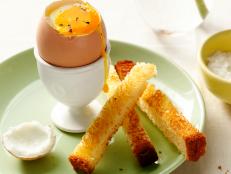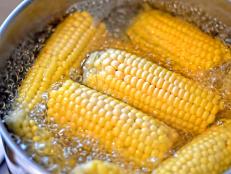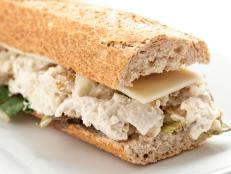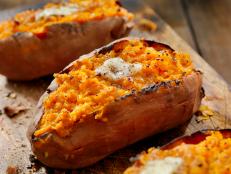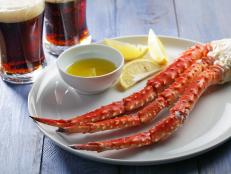What Is a Rolling Boil?
Not all boiling is the same. Here’s what to know when you need a rolling boil.

RyersonClark/Getty Images
By Alice K. Thompson for Food Network Kitchen
Alice is a contributing writer and editor at Food Network.
A watched pot will always boil, but how can you tell exactly when it’s rolling? Much of stovetop cooking involves gentle heat: simmering a soup or stew, poaching eggs or chicken or cooking rice and other grains. But a few common techniques require more vigorous and sustained heat. That’s when a rolling boil comes in. Here’s what a rolling boil is, how you can recognize it and when you’d want to use it.
What Is a Rolling Boil?
Sometimes called a full boil, a rolling boil occurs when large bubbles burst on the surface of a liquid, usually water, causing a vigorous and sustained churning and a generous release of steam.
You’ll know it’s a rolling boil if you give the liquid a stir and the boiling remains uninterrupted: The liquid is hot enough that movement, or even the introduction of other ingredients, will not drastically lower it’s temperature.
What Temperature Is a Rolling Boil?
For water, a rolling boil occurs when the contents of an entire pot reaches 212 degrees F/100 degrees C at sea level. This temperature is slightly lower at higher elevations. At 5,000 feet above sea level, for instance, the boiling point of water is 203 degrees (95 degrees C). Adding salt to water increases the boiling point very slightly. Other liquids, like wine or alcohol, boil at different temperatures.
How Water Comes to a Boil
Fill a pot with water, place it over high heat and you’ll notice these distinct stages as the temperature rises.
Simmer
When water simmers, the surface shimmers and small bubbles cling to the sides of the pan. A few bubbles will rise from the bottom and gently break at the surface. There’s little noticeable steam and the temperature measures between 180 and 190 degrees F (82 and 88 degrees F).
Low Boil
At this stage, bubbles rise more rapidly from the bottom of the pan and burst on the surface. The water temperature is around 200 degrees F (94 degrees C), and you will see occasional wisps of steam as some areas of the pot approach higher temperatures.
Rolling Boil
In a rolling boil, large bubbles burst vigorously and continuously over the entire surface of a pot of water, sometimes forcefully enough to splatter some liquid. The water has reached a constant 212 degrees F (100 degrees C) causing the continual release of steam. Want to test it? Give the water a stir. If the forceful bubbling goes on unaffected, you’ve got a rolling boil.

Sergio Amiti/Getty Images
When Do You Use a Rolling Boil?
A rolling boil is ideal when water temperature needs to remain constant even after ingredients are added. For blanching vegetables, for instance, its high heat flash-cooks the outside while keeping the inside crisp. When cooking pasta, the vigorous movement of the water helps keep the noodles from sticking to themselves. And live seafoods like crabs and lobsters benefit from a rolling boil to decrease their suffering and to help heat penetrate their shells quickly without overcooking their tender flesh.
Related Links:
























